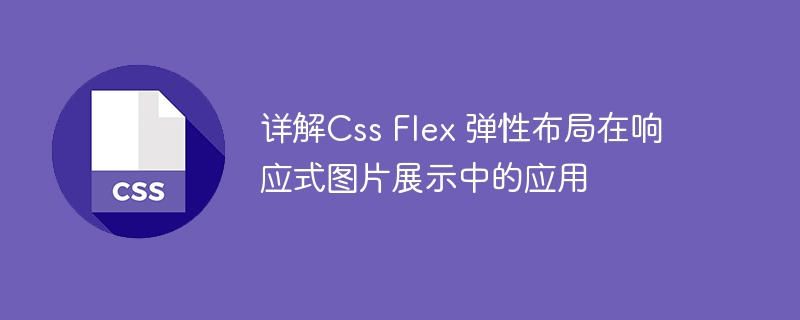

Detailed explanation of the application of CSS Flex elastic layout in responsive image display
In the past, when we displayed images on web pages, a problem we often encountered was how to use Images display well across different screen sizes. The traditional CSS layout method cannot solve this problem well, and CSS Flex elastic layout is an effective solution. This article will introduce in detail the application of CSS Flex elastic layout in responsive image display and provide specific code examples.
1. What is CSS Flex Flexible Layout
CSS Flex Flexible Layout is a new feature in CSS3, which allows elements in a container to automatically adjust their size and position under different screen sizes. . Flex layout consists of a series of containers and items. The container is the parent element and the items are the child elements. By setting different properties for containers and items, we can achieve flexible layout effects.
2. Basic principles of Flex elastic layout
When using Flex layout, we need to set the display attribute of the container to flex or inline-flex. The elements within the container will automatically become items and will be arranged according to certain rules by default.
Flex layout is based on two concepts: main axis (main axis) and cross axis (cross axis). The main axis is the main direction of the Flex container, and items are arranged along the main axis by default. The cross axis is the axis perpendicular to the main axis.
By setting different properties, you can control the position, size and arrangement of items on the main axis and cross axis. Commonly used attributes are:
3. Responsive Image Display Example
The following is a simple responsive image display example, we will use Flex layout to implement it.
HTML code:
CSS code:
.container { display: flex; flex-wrap: wrap; justify-content: space-between; } .item { flex: 1 0 30%; margin-bottom: 20px; } .item img { width: 100%; height: auto; }
In this example, we first set .container to flex layout, and then set flex-wrap to wrap, like this Items wrap automatically when they exceed the width of the container. We also set justify-content to space-between, which will equal space between items on the main axis.
.item is the style of the item. We set it to flex: 1 0 30%, so that the item will automatically adjust its size according to the remaining space, placing 3 items in each row. We also set margin-bottom to 20px to add some space between items.
Finally, we set the width of .item img to 100% and the height automatically adjusts. This way the image will automatically scale in different screen sizes.
Through this simple example, we can see that Flex layout can easily implement responsive image display. By setting different properties, we can easily control the arrangement and size of images on different screen sizes.
Conclusion:
CSS Flex elastic layout is a powerful responsive layout solution suitable for various layout needs. In responsive image display, we can easily control the arrangement and size of images by using Flex layout to achieve good display effects. I hope the introduction in this article can be helpful to readers in actual development.
The above is the detailed content of Detailed explanation of the application of CSS Flex elastic layout in responsive image display. For more information, please follow other related articles on the PHP Chinese website!




